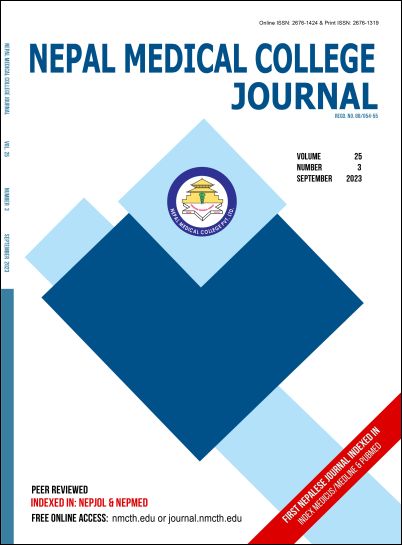Topography and indexing of the nutrient foramina of the adult long bones
DOI:
https://doi.org/10.3126/nmcj.v25i3.58733Keywords:
Foraminal index, nutrient foramen, nutrient artery, morphometryAbstract
The primary source of blood supply for long bones comes from the nutrient arteries that pass through the nutrient foramen. Understanding the location and structure of these foramens is important in surgical procedures to ensure that the bone’s blood supply is not disrupted. To study the morphology and topography of nutrient foramina and to determine the foraminal index of the upper and lower limb long bones. The long bones of the upper and lower limbs including 47 humeri, 38 radii, 38 ulnae, 53 femurs, 57 tibiae, and 44 fibulae were studied. The number and position of primary nutrient foramina were noted and the foraminal index was calculated. Results showed that 82.9% of the humeri had a single nutrient foramen, and 17.0% had double foramina. For the radii, 97.4% had single nutrient foramen and 2.6% had double foramina. A single nutrient foramen was observed in all the ulnae. In the lower limb bone, the femurs had 41.5% of single nutrient foramen, 56.6% had double foramina and only 1.9% had triple nutrient foramina. The tibiae showed 93.0% of the single nutrient foramen and only 7.0% had double foramen. In fibulae, only one nutrient foramen was seen. The mean foraminal index was 57.26 for the humerus, 34.82 for the radius, and 39.32 for the ulna. Similarly, the mean foraminal index of the femur was 44.73, the tibia was 32.32 and the ulna was 46.18. Understanding the location of foramina is crucial inmaintaining bone vasculature during surgical procedures, which can improve the success rates of bone grafting, fracture fixation, and replacement surgeries involving the shoulder, elbow, and knee joints.
Downloads
Downloads
Published
How to Cite
Issue
Section
License
Copyright (c) 2023 Nepal Medical College Journal

This work is licensed under a Creative Commons Attribution 4.0 International License.
This license enables reusers to distribute, remix, adapt, and build upon the material in any medium or format, so long as attribution is given to the creator. The license allows for commercial use.




